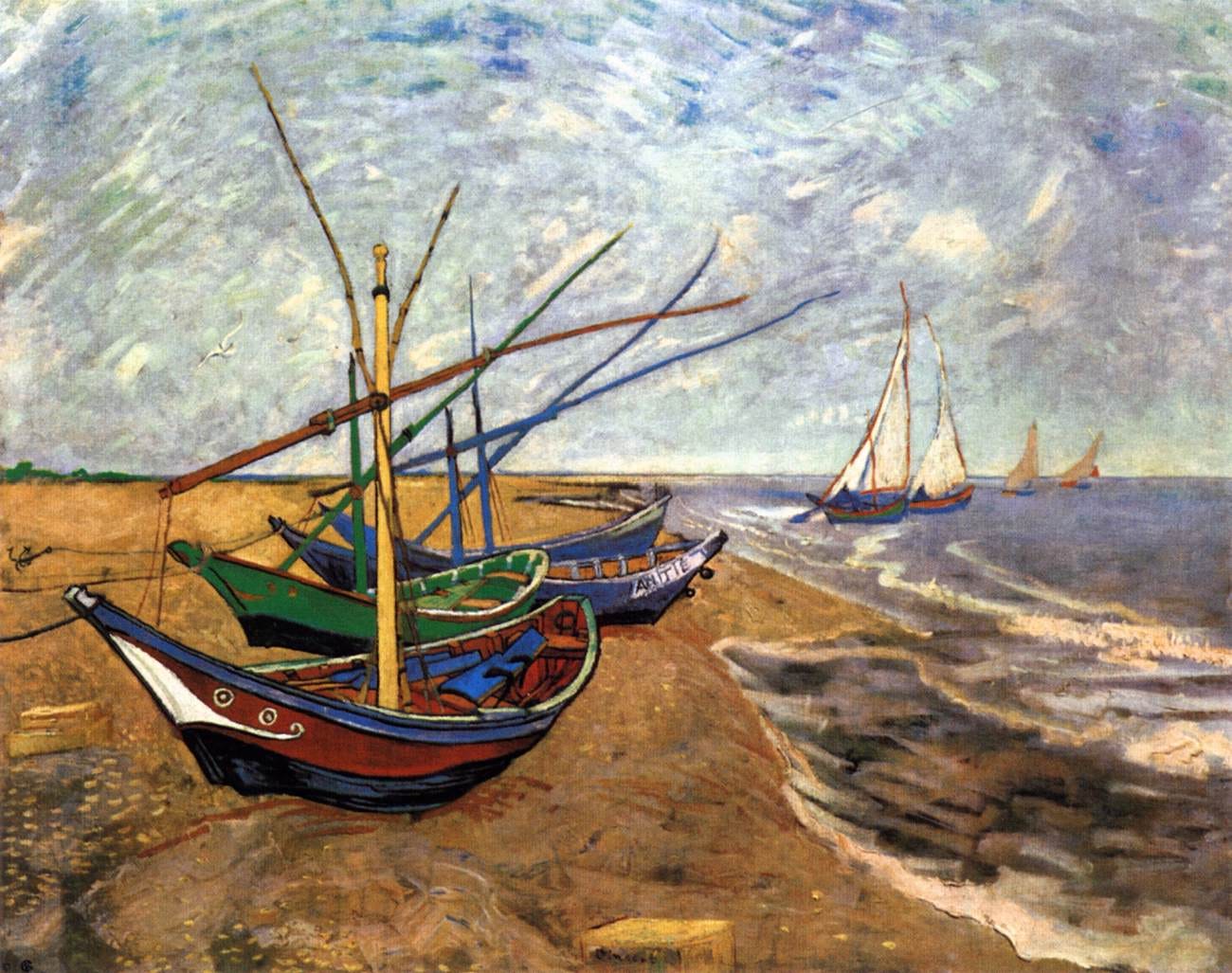The Poetry Foundation website tells us that “Ekphrasis” means “description” in Greek. Ekphrastic poetry involves describing a painting, sculpture, or photo/image by narrating and reflecting on the story behind it, often enhancing and broadening its meaning.
A famous example is “Ode on a Grecian Urn,” (written in 1819) in which the poet John Keats speculates on the identity of the lovers who appear to dance and play music, simultaneously frozen in time and in perpetual motion. (The Poetry Foundation).
There are many other wonderful examples of this kind of poetry, and indeed, whole poetry journals dedicated to the form. In fact, come to think of it, I’m going to set the theme of our fall issue of Sea to Sky Review as Ekphrastic! But more on that later.
The following two poems are both Ekphrastic so I thought I’d share. I’ll include the image too. If you feel inspired, why not trying your own poetic hands at Ekphrastic poetry! You can share a link in our comments.
Fishing Boats on the Beach at Saintes-Maries-De-La-Mer
(Inspired by a painting by Van Gogh)
One of these boats carried Mary,
put to sea by the Romans,
the crying woman, hands wrapped in rags
with the smell of myrrh. And a tomb angel
guards the beach. All the fishers have fled in fear
except the one who stayed to spread his cloak
over the water. For the women
in the boat, no sail, no paddles.
And the mourning Mary. Miracles,
she tells him, are untouchable.
The fisher guides her hand
to the red boat's prow,
the old wood thick
with loving paint. Hold fast
mother, he says
and the women are gone.
Flat sea. Four boats
returned to shore. Curdled cod's breath
sky. A yellow mast, yellow grass.
Some kind of large grey wing
floating in the water,
washing up against the rock.
This poem was entered into the workshop on The Guardian - for the record, here are moderator Amy Newman’s comments:
One can't help but be impressed immediately by Goodwin's imaginative rendering of what has happened before these boats were caught on the sand, awaiting Van Gogh. This is one of the lovely results that accompany such imaginative ekphrasis, to see what history the artist might imagine or know in the composition, and Goodwin energizes the painting's composition with the ideas and music of that narrative. The work takes us beyond the frame of the painting, back to a story of how these boats arrived at that point on the sand from having delivered "the crying woman, hands wrapped with rags/ that smell of myrrh." In such a journey, the painting is now mythic, and the words explore immense ideas, enlivened by the narrative's touching on the absences echoing within each pitch of the brush. In this way the boats, singled out in the final lines, do act as sentinels, necessarily silent interpreters, the kind of evidence that the naked eye might not have seen otherwise. Such a narrative has gained some of its power from Goodwin's early lines about so much history happening (and except for the poem, all unseen) among the apparent the absence of things: "no sail, no paddle" and the "fishers ...fled in fear" as well as the tenor of sadness, mourning, that makes the landscape both solemn and touched by miracle. Now those echoing brush strokes of Van Gogh's sky seem to vibrate for me. Lovely.
Amy Newman, October 2006 - The Guardian Poetry Workshop Shortlist
Run Rabbit
The window's open darling,
smell the wild winds, see how the
reddening sumac twists at dusk.
The world is a chaos of orange
and gamboge, the bush is alive,
the maple leaves jump and startle
like rabbits. Run rabbit -
leap the gate, you'll never be young
again. Age moves in from the north
and whitens the patch on gardeners' mountain.
Run to the river, along the mud trails,
thump your warning in the grasses, the aspen
are bending. It's a savage rain
that soaks the goatskin, washes wine
from your thin lips, leaves drops
on the bedclothes like payment.
By the end of day you’ll be lying on a stone table
with some straw
and two cold thrushes
resting against your dead belly.
(Inspired by a painting by Chardin - A Rabbit, Two Thrushes and Some Straw on a Stone Table )





